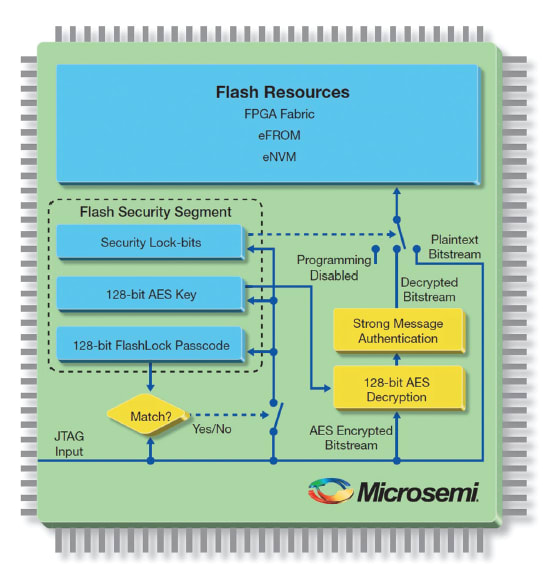With growing health awareness and the escalating cost of worldwide medical care, there is increasing emphasis on new and advanced technologies for disease prevention and early diagnosis and treatment. Personal health monitors and other portable medical devices are making it easier for people to assess their wellness, adopt better lifestyles, and prevent the majority of serious illnesses. These devices also improve the management of existing, long-term conditions outside the hospital environment. Wearable units connected to treatment centers can alert health professionals to problems before they become serious, no matter where the patient is located.

Portability and Power Efficiency
The typical wearable heart monitor consists of a control unit wirelessly connected to a transmitter that relays heartrate signals, skin temperature, and other measurements from a chest band or patch. Minimizing the power consumption of these portable devices is critical, and the challenge gets more difficult with the addition of liquid crystal display (LCD) technology and other new peripherals that simultaneously threaten to push system energy requirements even higher.
For example, many portable ultrasound scanners feature LCDs that support color and high resolution, and can consume as much as 50 percent of the application’s power budget. It is possible to significantly reduce battery drain in these situations by placing the LCD and control logic into power-saving mode whenever possible. However, this is difficult to do with off-the-shelf application- specific standard products (ASSPs) that are not designed for medical applications.
FPGAs, on the other hand, provide a very straightforward solution for implementing power-saving techniques in portable health monitoring systems. One approach is to power-down circuitry associated with the RF transmission functions. Many customized devices add dedicated features such as digital signal processing (DSP) algorithms to monitor certain conditions: i.e., the electrical profile of each heartbeat can provide vital information on the progress of a condition and give early warnings of potential problems. Inside the system, sensor units use ultra-low-power RF communication to relay measurements to the control unit. The sensor unit can also include an internal processing to filter out unnecessary readings and compress the data stream and associated RF transmission time, which can significantly improve battery life. By putting the analog capture and preprocessing functions into FPGA hardware, the sensor unit’s microcontroller can run at a very low duty cycle until it needs to activate the RF transmitter and send a packet of data to the control unit. All necessary functions can be implemented in user logic, including having the FPGA listen for wireless data packets — a function that normally would be implemented on a more power-hungry microcontroller.
In the case of more highly integrated FPGAs that feature an embedded 32-bit microprocessor core, an analog compute engine initializes and controls analog I/O ports supported by the device, automatically captures data from the analog inputs, and passes it to a hardware post-processing engine which can perform low-pass filtering and other functions before putting the data into a buffer for processing by the embedded core. To improve power efficiency and extend battery life, the processor need only be awakened when the buffer has reached a certain limit.
In one example of a typical heart monitoring system, the FPGA functionality was provided either by an IGLOO FPGA from Microsemi (Aliso Viejo, CA), or the company’s more highly integrated SmartFusion customizable system on chip (cSoC), which includes a combination of analog components, flash memory, an FPGA fabric, and an embedded industry-standard microprocessor on the same chip.
Ultra-low-power FPGAs are also available that reduce energy consumption even further. They enable the implementation of a variety of storage and I/O functions that push power draw down to 2 μW when the system is not in active use. This is a vital consideration for systems such as automated external defibrillators, which may be left unattended for weeks or months between tests.
Not all FPGA memory technologies deliver the same levels of power efficiency, however. Today’s high-density FPGAs can be based either on static random access memory (SRAM) technology, or non-volatile flash memory technology. The former tend to have high power requirements because a constant current is needed to keep their configuration cells programmed. This limits their deployment in portable or battery-powered medical equipment. In contrast, FPGAs based on flash memory technology do not need this additional current. Additionally, flash-based FPGAs have the capability of putting the entire device into an ultra-low power state when not in use. For medical devices that often have a low duty cycle and experience long periods between uses or measurements, this feature can make a dramatic difference in battery life.
Flash-based FPGAs also make it easier to squeeze more capabilities into a smaller space. SRAM-based FPGAs may require significant additional circuitry, including a boot read-only memory (ROM) and additional system memory for unsecure configuration code, plus a complex programmable-logic device (CPLD) for system configuration and supervisory tasks. Clock and reset signal generation circuits are also required upon power-up to help initialize components on board. These issues reduce reliability, add complexity and cost to the system design, and slow down the development process.
In contrast, flash-based FPGAs are live at power-up, so they don’t need this additional circuitry. In addition to improving system operation and reducing power consumption, being live at power-up also gives users immediate access to control functions, which is particularly important for many portable medical devices. It also provides an important security advantage. Since flash-based FPGAs retain state between power cycles, there is no need to reload the configuration at power-up. Perhaps even more importantly, the programming bitstream is never exposed to potential hackers. This provides critical protection for portable, home-based systems that need mission-critical reliability and must be trusted to transmit personal patient data.
Designing for Security
The growing use of portable devices to record, store, and transmit patient data to a central server means that personal health records now extend beyond the hospital or doctor’s surgery. These devices need secure ways to transmit the data they record at high speed to ensure that personal records cannot be compromised at any point. Reliability is also a requirement, both in terms of product longevity and assurance that the device is working as specified.
Today’s flash-based FPGAs protect these systems from IP theft and cloning. The only way to intercept the bitstream of a flash-based FPGA is to acquire it from the configuration file used to update the device in the field. Even this can be prevented by encrypting the file in the FPGA, and using flash memory to permanently store all encryption keys and settings, as shown in Fig. 1. This protects medical devices from reverse-engineering and copying stolen units.
Although many companies may be aware of the threat from IP piracy, there are other far-reaching consequences of insufficient design security. With the advent of programmable silicon products in the electronics marketplace, after-market tampering is becoming a growing area of concern. Such tampering could lead to regulatory or product liability for the manufacturer, and could possibly impact public safety. Consider what would happen if the wrong software were downloaded to an insulin pump, or counterfeit parts were used in its design. The unit might deliver inaccurate doses and seriously injure the patient. Users also can potentially override an OEM’s factory settings, which might cause the product to react in dangerous or harmful ways. The only way to preclude these situations is to use flash-based FPGAs that retain their state between power cycles, and permanently store encryption keys and settings that determine whether the parts can be reprogrammed after manufacture. There are a number of encryption keys that can be used to provide increasing levels of design security based on the requirements of the end equipment manufacturer or service provider.
Today’s portable health monitoring systems and other medical devices must be small and lightweight. They also must operate as long as possible on a single battery charge, and include the necessary security features to protect patients from product theft and cloning that could lead to unpredictable and dangerous performance and reliability problems. Non-volatile, flash-based FPGA technology delivers the necessary integration and low power consumption to enable extremely compact and energy-efficient system designs that are extremely difficult to copy or tamper with.
This article was written by Minal Sawant, Product Marketing Manager, Medical Products for Microsemi Corporation, Aliso Viejo, CA. For more information, Click Here .



